Childersburg was a small, mainly rural town of around 500 people in Alabama in the late 1930s. At the time, the town lacked a bank, a hotel, or even a movie theater and vacant houses were rare.
Life changed drastically for Childersburg in 1941 with the advent of World War II, when the town was selected by the federal government as the site for the Alabama Ordnance Works which provided high explosives for the war effort.
Workers had young children
The Ordnance Works was built by the federal government and Du Pont and over 21,000 people, which included families with children, moved to the town for jobs at the new plant. Many of the workers had young children. Since housing was so inadequate, initially some wartime workers rented beds in shifts.
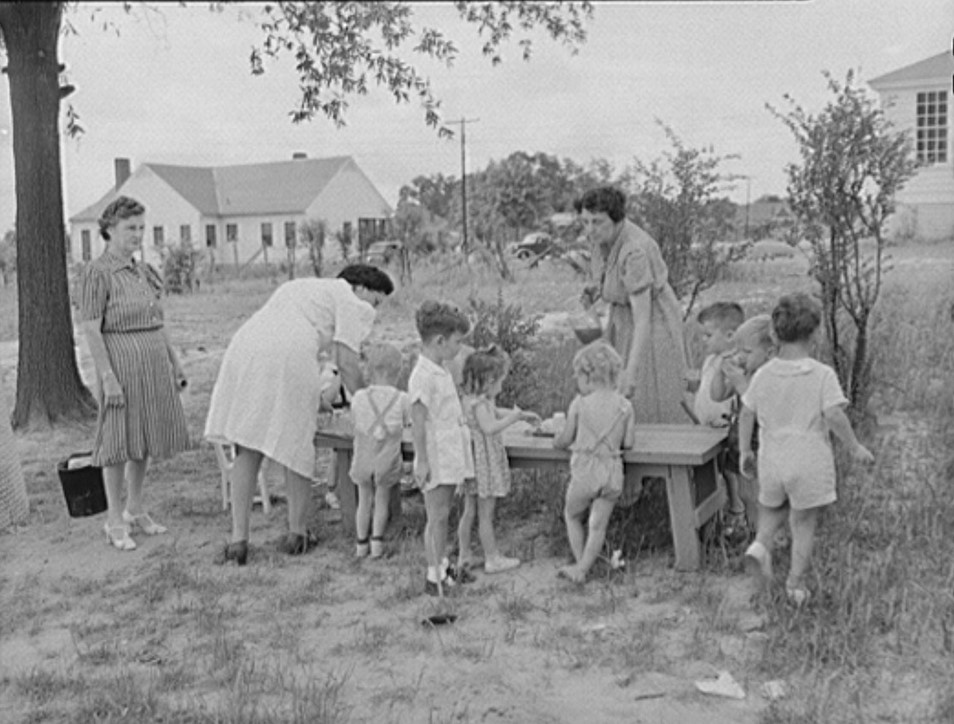 Childersburg, Alabama. Tomato juice is served to the children at 10 a.m. in the WPA day nursery for defense workers children May 1942 John Collier (Library of Congress)
Childersburg, Alabama. Tomato juice is served to the children at 10 a.m. in the WPA day nursery for defense workers children May 1942 John Collier (Library of Congress)
Women forced into the Work force
In addition to men, many women were forced to into the work force during the war due to their husbands being drafted and day care was practically non-existent. Children were reported to have been left alone or locked in parking lots while their mothers worked.
Following the Great Depression, the federal government got involved with child care centers through the WPA (Works Progress Administration) in many communities.
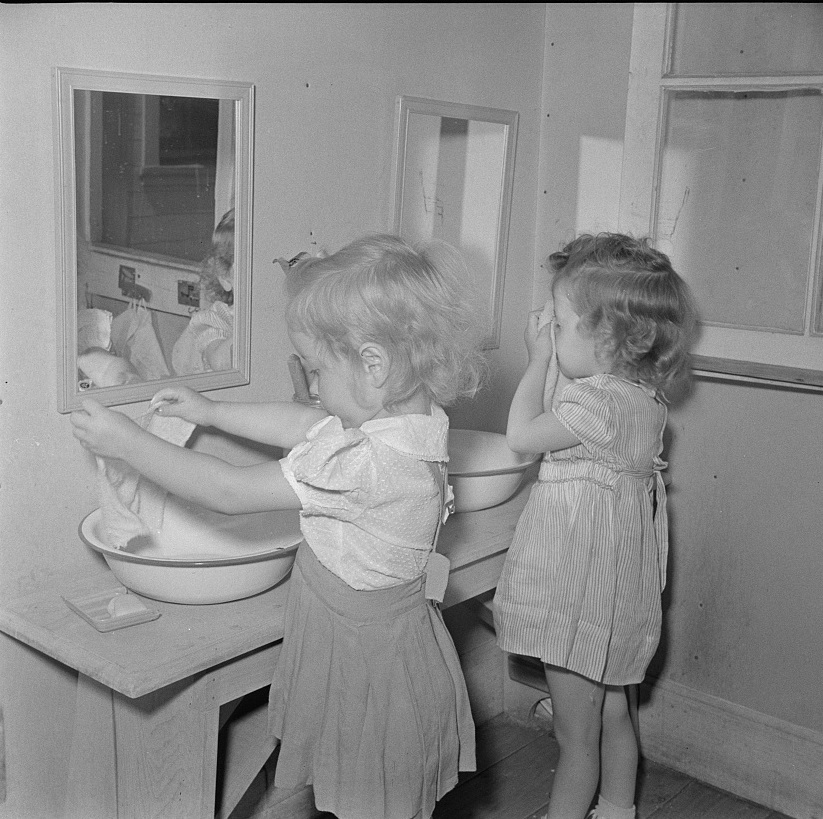 Childersburg, Alabama. Children washing in WPA day nursery for defense workers’ children May 1942 (John Collier, Library of Congress)
Childersburg, Alabama. Children washing in WPA day nursery for defense workers’ children May 1942 (John Collier, Library of Congress)
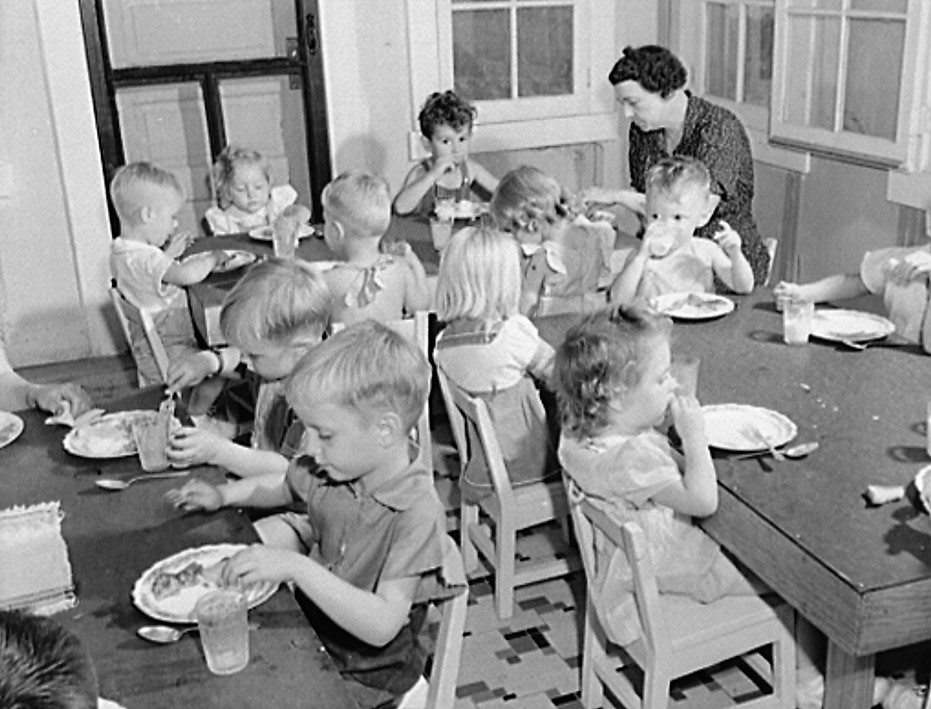 Childersburg, Alabama. Lunch period in the WPA day nursery for defense workers’ children, May 1942 (John Collier, Library of Congress)
Childersburg, Alabama. Lunch period in the WPA day nursery for defense workers’ children, May 1942 (John Collier, Library of Congress)
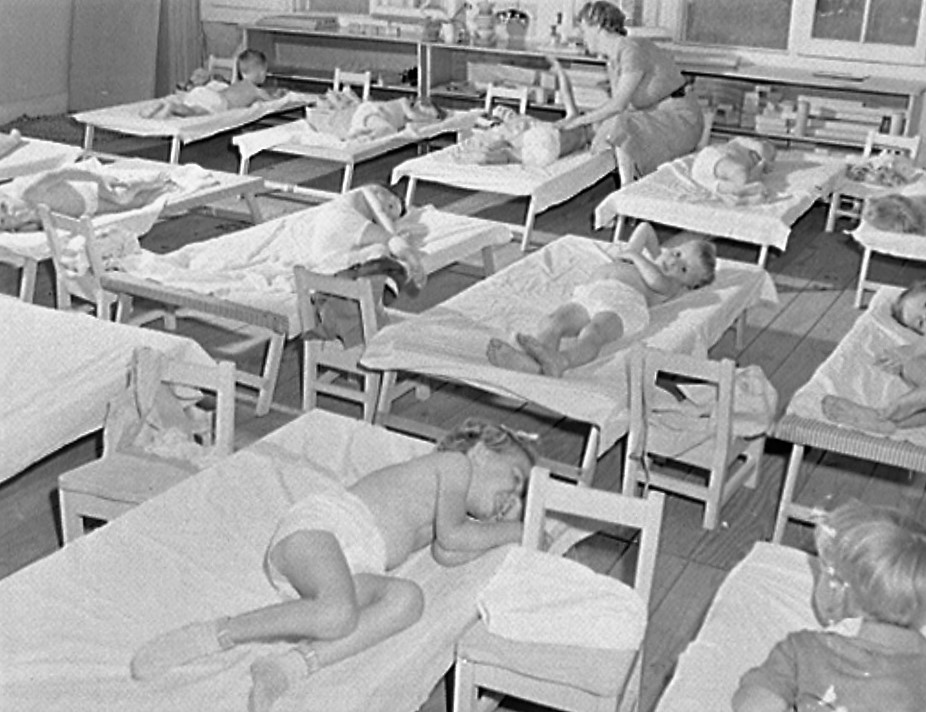 Childersburg, Alabama. Rest period in WPA (Works Progress Administration) nursery for defense workers’ children, May 1942 (John Collier, Library of Congress)
Childersburg, Alabama. Rest period in WPA (Works Progress Administration) nursery for defense workers’ children, May 1942 (John Collier, Library of Congress)
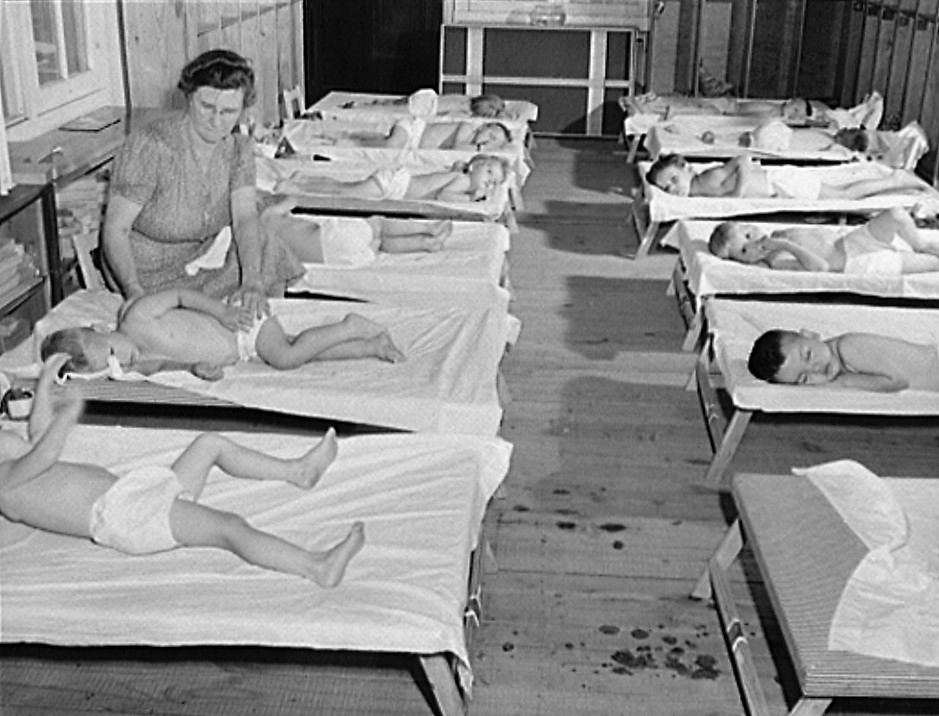 Childersburg, Alabama. Rest period in WPA (Works Progress Administration) nursery for defense workers’ children May 1942 (John Collier, Library of Congress)
Childersburg, Alabama. Rest period in WPA (Works Progress Administration) nursery for defense workers’ children May 1942 (John Collier, Library of Congress)
Limited to war impact areas
To meet the needs of communities like Childersburg who were suddenly inundated with a mass of people, Congress passed the Lanham Act to assist them in 1940. “The Lanham Act authorized federal grants and/or loans to public or private agencies for the maintenance and operation of public works, later interpreted by administrative decree to mean child care facilities in war-impacted areas In July 1942, Congress authorized the use of $6 million of the waning WPA appropriation for child care facilities for children of working mothers rather than just mothers on home relief. In war production areas, the WPA centers were thus transformed to meet a new need, and their funding was shifted from WPA to Lanham Act dollars.”1
The centers were limited to “war impact areas”. Before the Lanhan Act, private charities or elite women’s giving groups funded child care to help mostly low-income and unemployed parents as a way to help them find work.
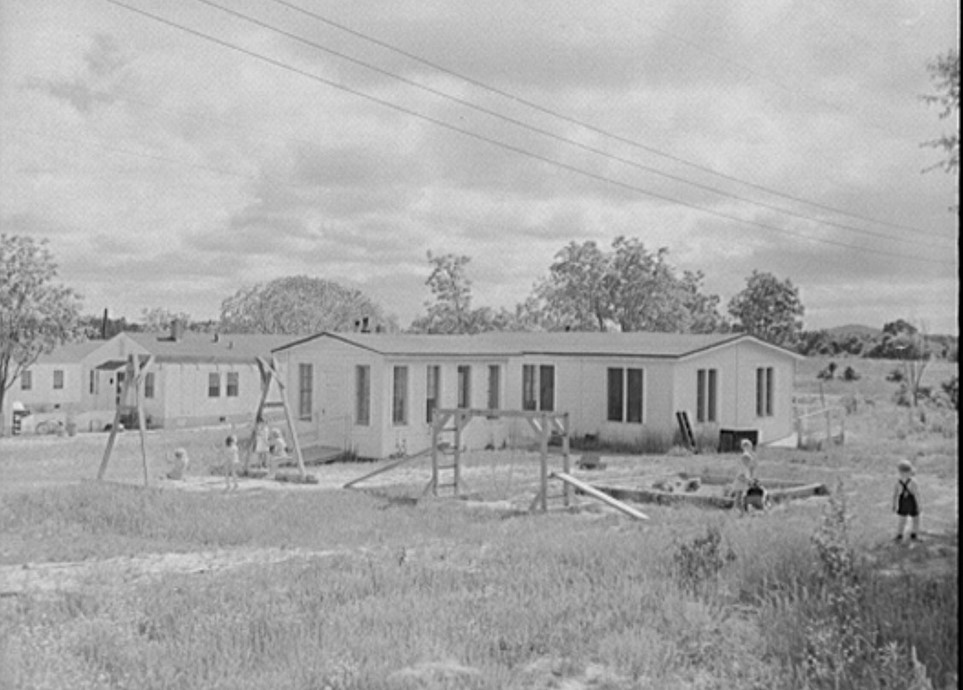 Childersburg, Alabama. WPA sand box at day nursery for defense workers’ children May 1942 (John Collier, Library of Congress)
Childersburg, Alabama. WPA sand box at day nursery for defense workers’ children May 1942 (John Collier, Library of Congress)
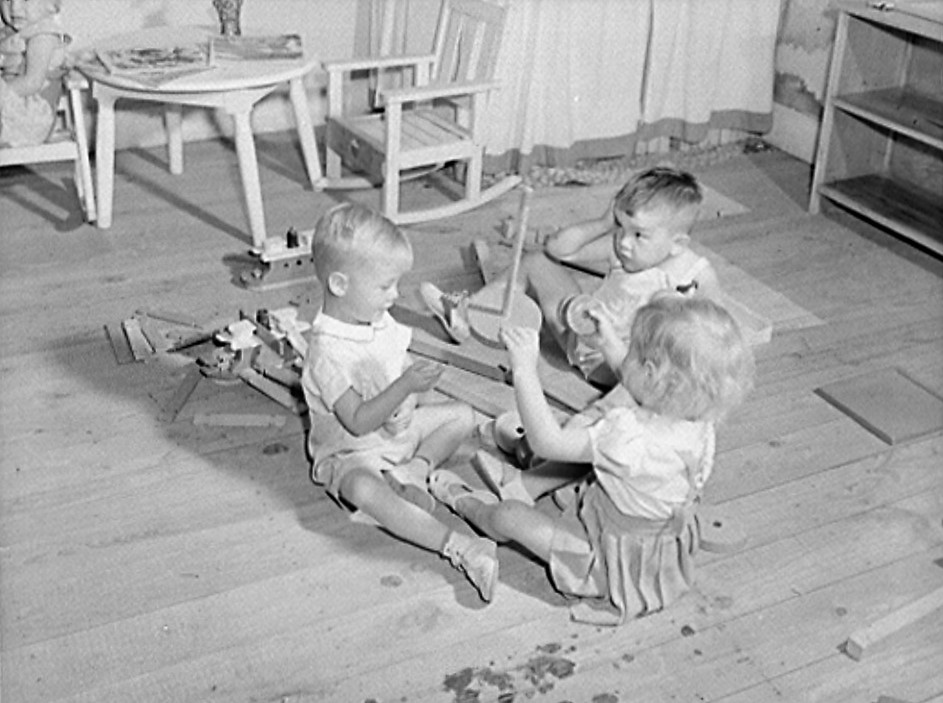 Childersburg, Alabama. WPA (Works Progress Administration) day for nursery for defense workers children (John Collier, Library of Congress)
Childersburg, Alabama. WPA (Works Progress Administration) day for nursery for defense workers children (John Collier, Library of Congress)
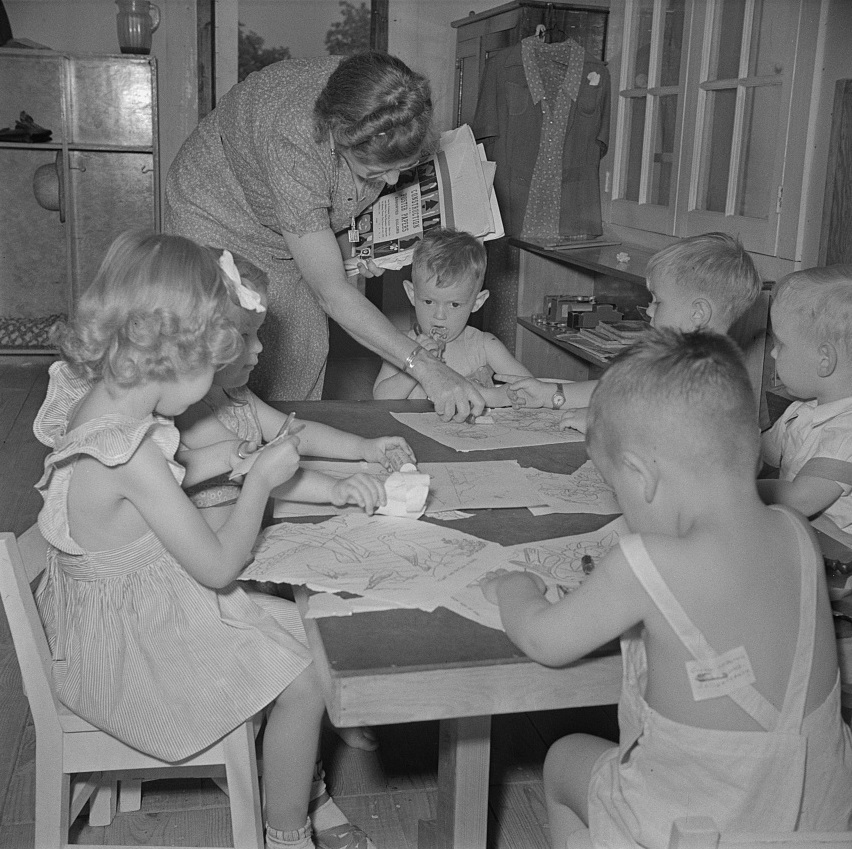 Childersburg, Alabama. WPA (Works Progress Administration) day nursery for defense workers children May 1942 (John Collier, Library of Congress)
Childersburg, Alabama. WPA (Works Progress Administration) day nursery for defense workers children May 1942 (John Collier, Library of Congress)
Gave wartime stimulus funds to communities
When the Lanham Act was passed, it gave wartime stimulus funds to local communities to build and staff their own child care facilities. The services were open to high-income, low-income, high-education, low-education, married mothers, unmarried mothers, the employed and the unemployed. At first, a flat charge was paid, then 50 cents per day. This was later increased to 75 cents a day.
The Act came was passed because all women were being asked to enter the workplace and mothers had no place to leave their children.
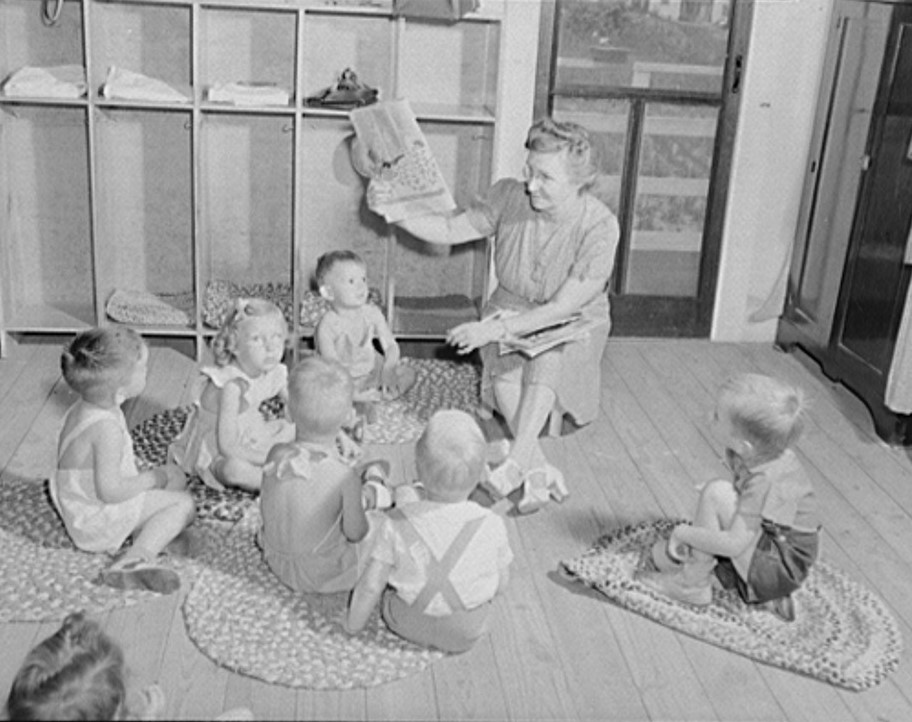 Childersburg, Alabama. WPA (Works Progress Administration) day nursery for defense workers children May 1942 (John Collier, Library of Congress)
Childersburg, Alabama. WPA (Works Progress Administration) day nursery for defense workers children May 1942 (John Collier, Library of Congress)
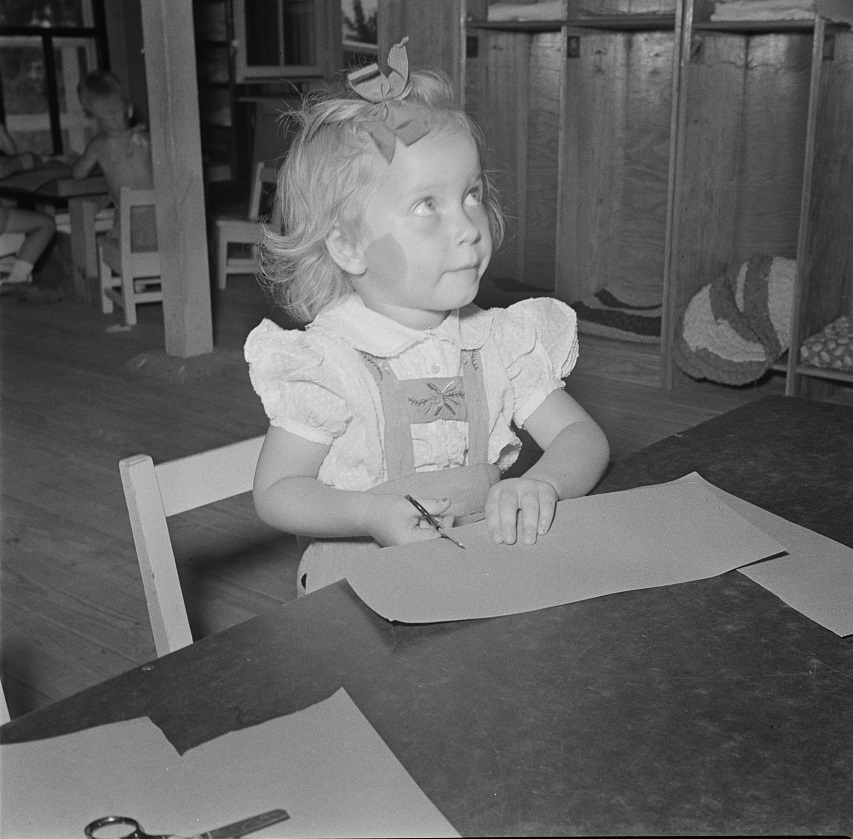 Childersburg, Alabama. WPA (Works Progress Administration) defense workers child ( May 1942, John Collier, Library of Congress)
Childersburg, Alabama. WPA (Works Progress Administration) defense workers child ( May 1942, John Collier, Library of Congress)
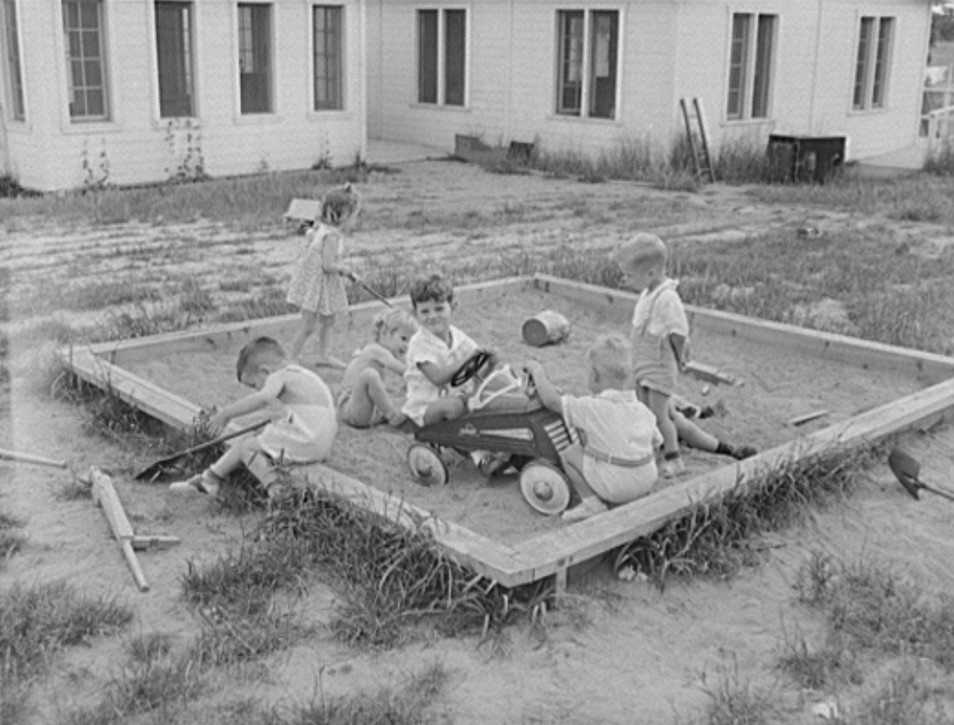 Childersburg, Alabama. WPA sand box day nursery for defense workers children May 1942 (John Collier, Library of Congress)
Childersburg, Alabama. WPA sand box day nursery for defense workers children May 1942 (John Collier, Library of Congress)
Discontinued after the World
It is estimated that 130,000 children were enrolled federally sponsored day care centers in all but one state and in D. C. (New Mexico was the only state not to request child care funding via the Lanham Act. The program was discontinued after World War II.
ALABAMA FOOTPRINTS Immigrants: Lost & Forgotten Stories includes some lost & forgotten stories of their experiences such as:
- The Birth of Twickenham
- Captain Slick – Fact or Fiction
- Vine & Olive Company
- The Death of Stooka
- President Monroe’s Surprise Visit To Huntsville


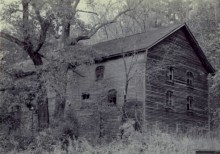
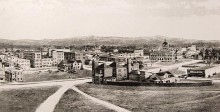

Just north of Childersburg on Plant Rd. are what looks to be the remnants of that WWII plant in the film. One large building and two old large stacks and you can also tell from the air the parking lot locations.
Ashley Littrell Childress
Meagan and Lauren Oubre
This site is becoming one of my favorites to read. TY for interesting articles!
Thanks Janey!
Brandon Gilliland
Now we are asked to provide a long list of supplies that include soap, paper towels and sometimes toilet tissue and I’ve gone into schools that didnt have the necessary supplies in the school bathroom. Parents check your children’s schools to insure those supplies are being used. We have had many more diseases that close schools and this could be the reason! Seriously
You mean taxpayer funded
Personal responsibility much?